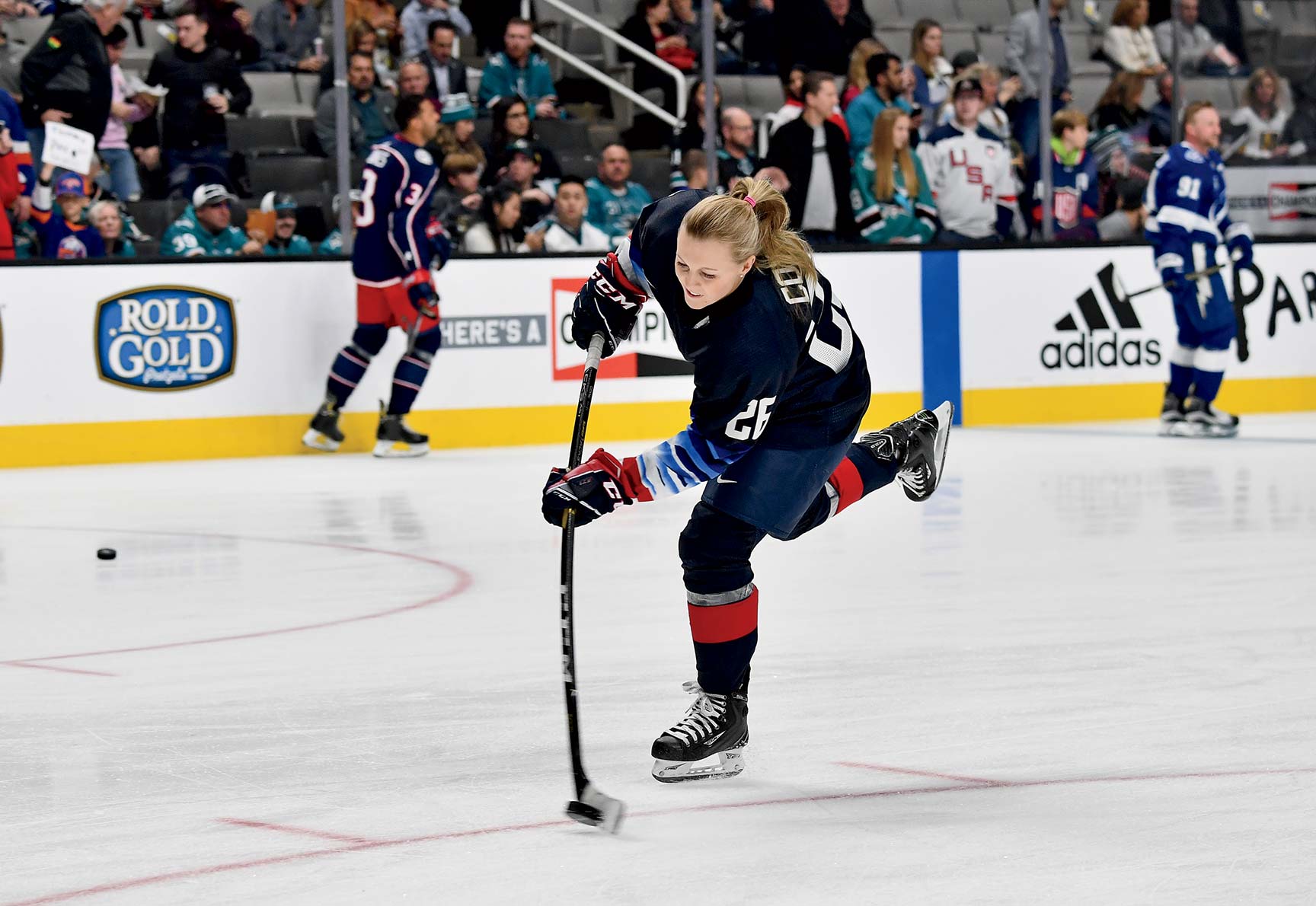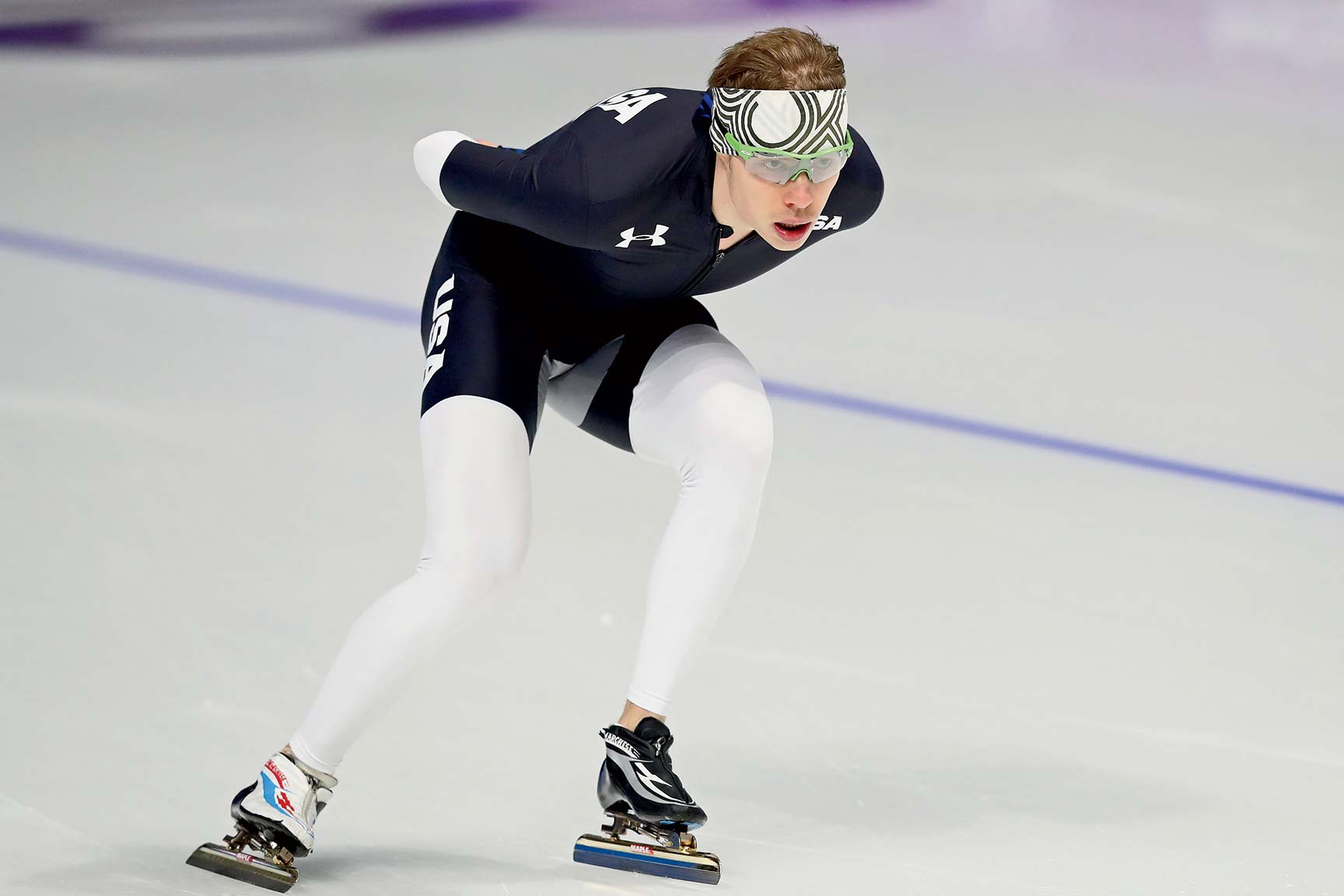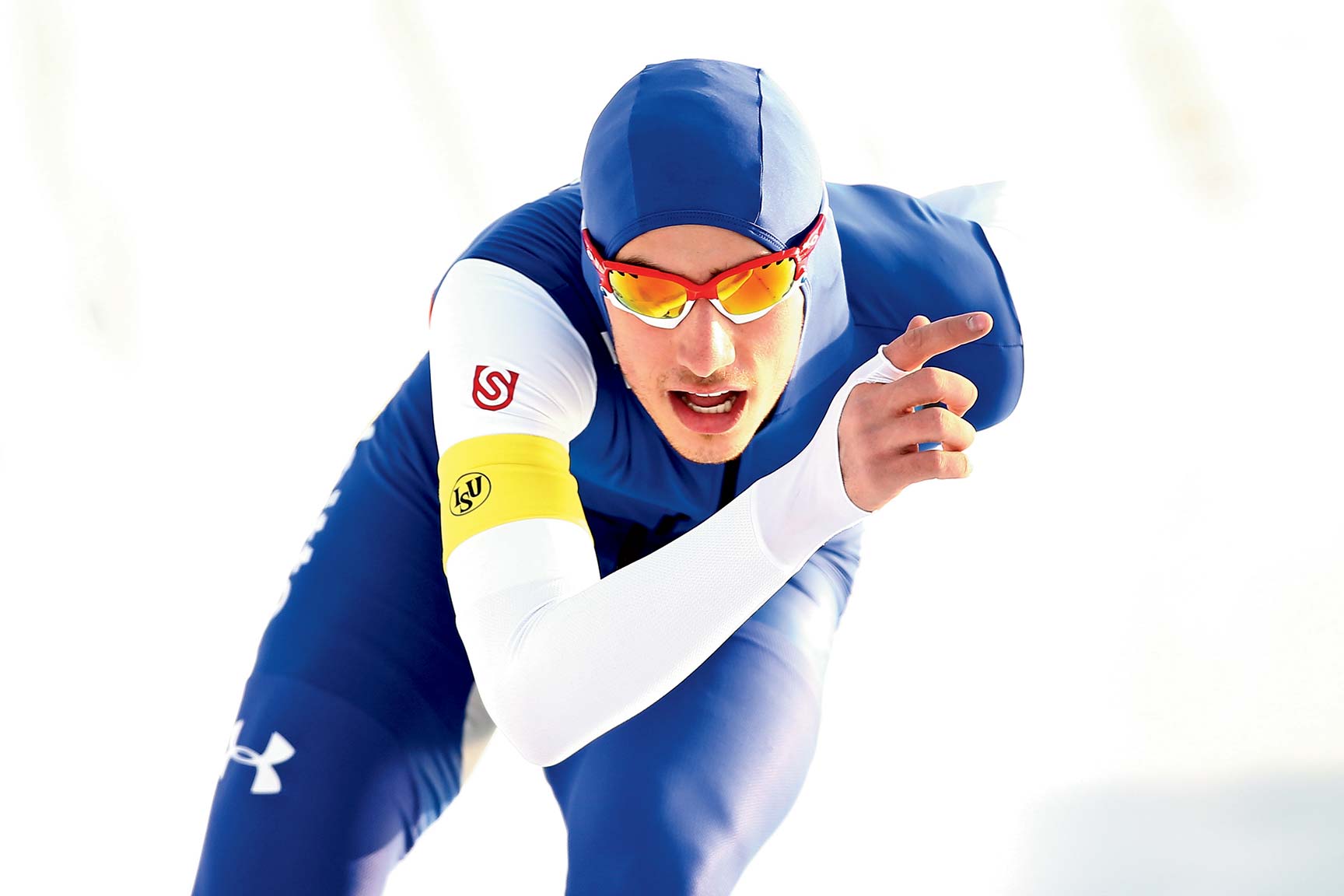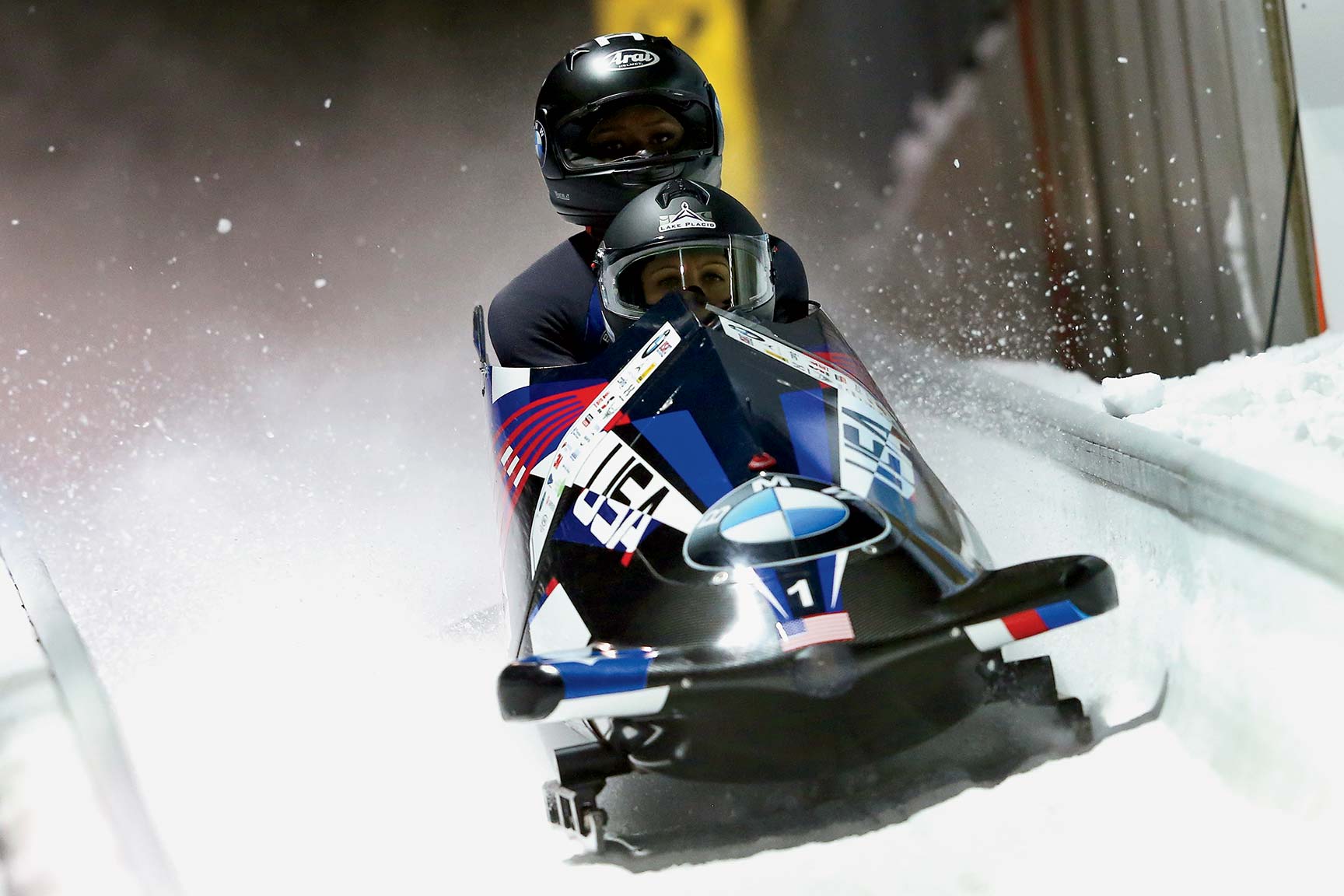How to Whoosh Down a Sledding Hill
● Olympian Aja Evans, bronze medal bobsledder
● Hometown South Loop
● Advice “My sister, my mom, and I used to go sledding at Dan Ryan Woods and use different things, like big plastic tubs, to see what was the fastest. My mom said, ‘We need a real sled.’ She got us a red four-person plastic one, and when we went back, we were flying. We’d make friends, and when someone would hop in with us, we’d go even farther. Fluffy snow will create too much friction. So say you have fresh snow. It may take a few runs to compress it, but if you keep going down the same place, you can make it a hard, ice-like surface. To go faster, get in a tight position to lessen wind resistance. Extend your legs out and arms forward. Get low and keep an even balance. Stay relaxed and enjoy the ride.”

How to Start and Stop on the Ice
● Olympian Kendall Coyne Schofield, gold medal hockey player
● Hometown Palos Heights
● Advice “Say you’re gliding on two feet. You’re going at a moderate pace and want to go faster. Implement a crossover to increase your speed. Work both edges of your skates and put your left foot over your right. The right foot becomes your power foot that’s going to push you out. And then when you are skating fast, the most important skill is stopping. Take your hips and throw them forward, transferring your weight in the direction you’re trying to stop — one foot on the inside, one foot on the outside. And shave that top layer of ice.”

How to (Safely) Skate on a Pond
● Olympian Brian Hansen, silver medal speedskater
● Hometown Glenview
● Advice “Skating outside on lagoons has become a recreational thing for me now that I’m done training. But I take a lot of precautions. I use ice-testing poles that are like spears. I look for four inches of thickness. I’ll do a practice lap with a friend. I also bring ice awls. They’re kind of like if you took a little rod and put a screw through it so you can grip the ice in case you slip in. We’ll wear a wetsuit if we’re not sure. Often ice freezes in the middle but might be thinner at the edges, so I’ll scoot on a surfboard to get to the thicker ice. One time, me and a friend paddleboarded out in Lake Michigan by Racine. There were floating, mile-wide ice islands. They were definitely thin — but thick enough to skate on.”

How Not to Fall on the Rink
● Olympian Emery Lehman, speedskater
● Hometown Oak Park
● Advice “In skating, you need to be in an athletic stance: a slight knee bend, a slight ankle bend, muscles activated. If you’re standing up straight, you’ll fall. But in an athletic stance, you can feel that motion coming and resist it. You don’t want to mistake that for having your ankles caved in. You want the skate at an angle with blades rotated out but legs straight. Practice walking like this on the ice — think of it like a duck walk. Focus on keeping pressure on the inside edge without pushing your ankles in. Get more and more comfortable, then you can get lower in your stance and start pushing out more — and that’s when you’ll get really fast.”



